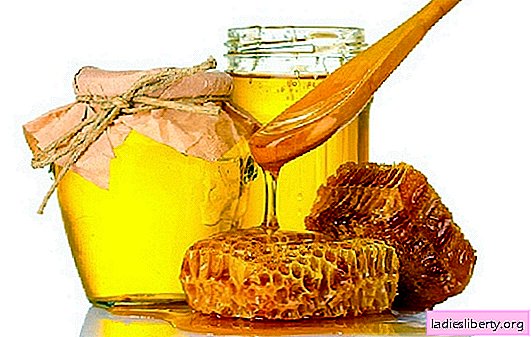
Sorrel is one of the first leafy vegetables that we can eat in early spring. In addition to a pleasant sour taste, they also contain many vitamins. Slavic peoples have known about sorrel for a long time, they are actively using it in cooking. When its use is useful, and to whom it is harmful, we will talk today.
Bit of history
There is no exact data when the sorrel appeared on the tables, it is only known that the Romans and Ancient Greeks made culinary products with its use.
But before he got to the table of Russia, fans of traditional medicine knew about the benefits of sorrel, used it as a medicinal plant. Its healing properties were studied by ancient healers, sorrel was used to treat dysentery, as a hemostatic agent, for indigestion. It was also believed that sorrel could cure the plague.
Composition
The main useful properties are its composition. For cooking, use both sorrel leaves and stems.
Sorrel has a huge amount of vitamins, organic acids, minerals, is rich in antioxidants, essential oils, flavonoids, carotene. The listed substances in the complex have a therapeutic effect, help in the fight against various diseases.
Its calorie content is low, which makes it possible to use people with excess weight.
The benefits of sorrel for the body
Sorrel leaves are used by folk healers to eliminate pain during menopause in women. Justified the use of dysentery and gastrointestinal problems.
Therapists as a complex treatment advise adding sorrel when cooking food to people suffering from heart pain, rheumatism, tuberculosis, infertility, impaired potency.
Sorrel juice is used for colds: cough, runny nose, colds, gum disease. For the oral cavity, it acts as a disinfectant, eliminates bad breath, and is also able to whiten tooth enamel to some extent. If you drink juice, the benefits of sorrel will be tangible as a cleansing of the body of toxins.
The use of leaves helps to get rid of constipation, to improve the liver, and women use this part to increase lactation. Also, young spring leaves will help get rid of vitamin deficiency due to the presence of a huge amount of vitamins in them.
Sorrel seeds are used as a treatment to get rid of problems such as worms, diarrhea.
The leaf along with the stem is used in folk medicine for allergies, vitamin deficiency.
A decoction of leaves is used in case of stomach problems. In this case, it is enough to drink a glass of broth.
Sorrel, included in the diet, stimulates the work of internal organs, and to get rid of a headache, it is enough to drink half a glass of sorrel juice.
If a child has an abrasion, it will not hurt to attach sorrel sheets to her, having previously minted.
The use of sorrel in cosmetology
For cosmetic purposes, sorrel has found its application. Every girl dreams of velvety, fresh skin. Mixtures using sorrel can relieve inflammation, lighten the skin, and get rid of acne and acne. This is how you can see the skin after regular use of masks with the use of sorrel.
Sorrel will also help strengthen hair. A decoction of the roots of greenery will allow you to achieve a lively natural shine of curls, get rid of loss.
Harm from sorrel
Despite the benefits of eating sorrel, harm is subsequently also possible. It consists in the excess of the consumed amount of greenery, also for some diseases.
Contraindications
The healing properties of sorrel can not be used by everyone. Consider the categories to which it can not be applied.
1. Patients suffering from disorders of water-salt metabolism in the body, as well as pregnant and lactating. In this case, the sorrel should be completely abandoned. The fact is that its use blocks the absorption of calcium, and this element is very important for the future baby, affects the cardiovascular system. Also, the "spring king" affects the functioning of the kidneys, so problems can arise with them.
2. The presence of diseases such as rheumatism, gout, gastritis, enterocolitis, ulcers, kidney disease, diabetes.
3. People with thrombophlebitis should be extremely careful when consuming sorrel. The fact is that horse sorrel has the ability to enhance blood coagulation, and in this case, its use can become dangerous.
In addition to the indicated contraindications for the use of sorrel, the following rules should be remembered:
· Sorrel can cause an exacerbation of any of the previously present diseases. To prevent this from happening, the amount of greens consumed must be limited: sorrel may be present in the diet a couple of times a week.
· If you undertook to prepare a dish, in no case do not use aluminum utensils. Otherwise, harm from the sorrel is inevitable: it will react with the metal and subsequently released toxins harmful to the body. This is especially dangerous for expectant mothers, as well as children under the age of three years.
· Do not abuse dishes with herbs for a long time. Doctors explain this by the fact that it contains oxalic acid in large quantities, it threatens with impaired metabolism of minerals, as well as kidneys, and can cause the formation of stones.
· During the heat treatment of sorrel, the acid released from it turns into inorganic, therefore, preference should be given to fresh herbs.
· The most useful substances in sorrel until the beginning of July. Leaves from a young plant until this time can be prepared and put in the freezer. In this case, he will retain his useful properties. Also, most of all vitamins and nutrients are in the greens of the first year.
How to prepare sorrel for the winter
We have the opportunity to harvest this excellent greens in the fall, when the sorrel has already withered. The roots are dug up, cleaned of the ground, the stems are removed, the leaves are washed well with water. Rhizomes are cut.
Raw materials can be dried both in the shade and in the sun. If the weather does not allow, a dryer is suitable. The temperature should be from 50 to 60 ° C, periodically the sorrel must be turned over.
Ready can be considered roots that break when bent, and not just bend. The shelf life of such a sorrel is three years.
Interesting facts about sorrel
The excellent taste properties of horse sorrel have been appreciated since ancient times, therefore it is used in cooking dishes by the French, Germans, Germans, and Dutch.
In Russia, it began to be used in the 16th century. Before that, he was considered a weed, the Russians were extremely surprised when foreigners pinched him and ate. But the name "sorrel" appeared much later. At first they called this green "wild beet", "meadow apple".
The benefits and harms of sorrel are not fully understood by scientists today. But he remains on the dining table. We are so addicted to its sour taste that it is already impossible to refuse. Nevertheless, it is worth observing the norms of use, as well as giving the advantage to a fresh plant.











